Make Korean spicy pork bulgogi at home with this easy recipe. Quickly stir-fry thin slices of pork shoulder in a spicy gochujang sauce for a home-cooked meal that rivals restaurant quality, if not better.
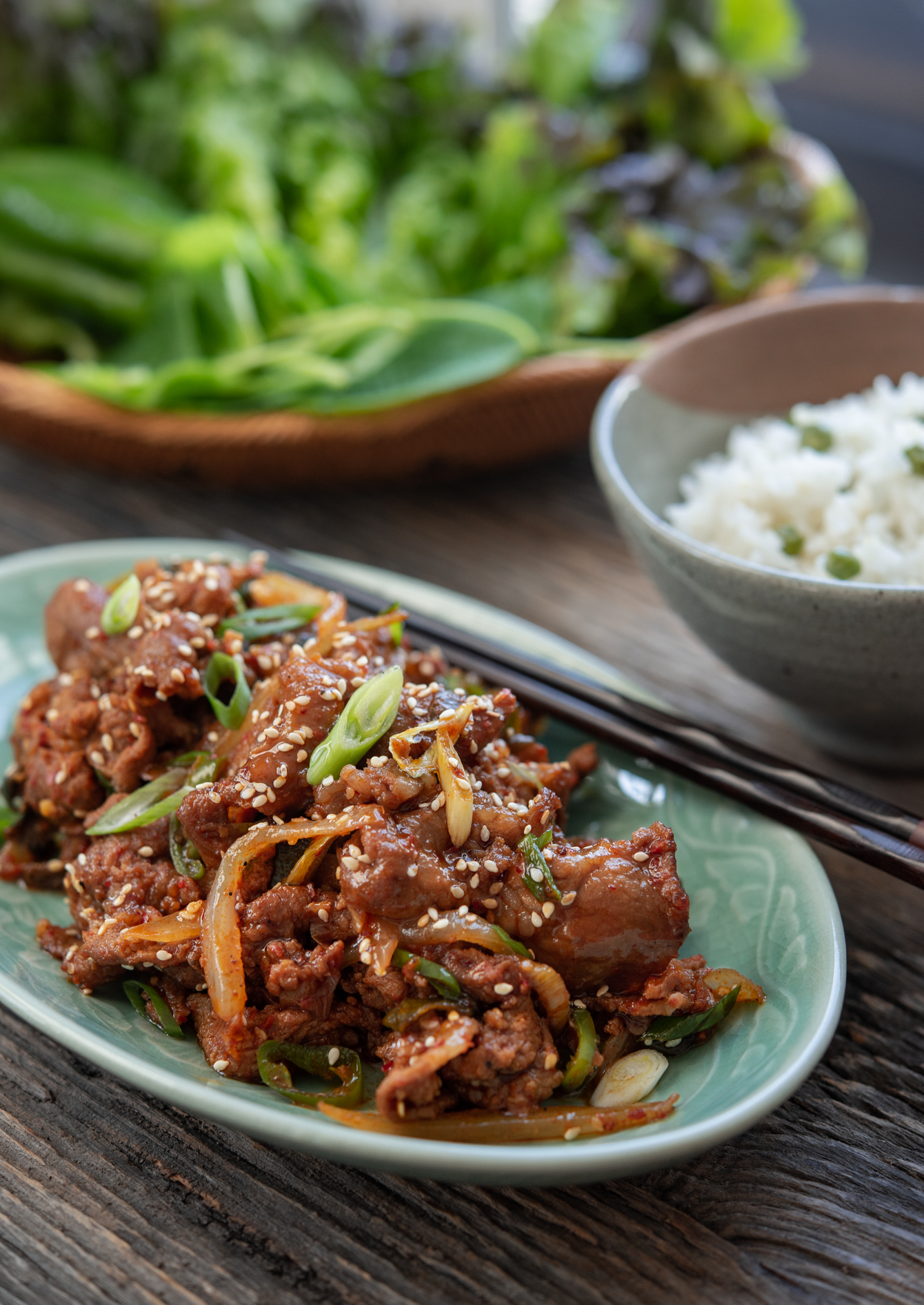

“This was so easy, and turned out WONDERFUL. Both boyfriend and I loved it. Thank you so much for this recipe! It’s a keeper!”
mandalemeg
The spicy pork dish from Korea is known by names like Jeyuk Bokkeum (제육볶음) and Dweji Bulgogi (돼지불고기), which means pork bulgogi. “Jeyuk” stands for pork and “bokkeum” means stir-fry. It’s a spicy pork stir-fry using a sweet and spicy sauce called gochujang.
This dish is a favorite at Korean BBQs and loved all over the world. It’s simple to make with just a few basic Korean ingredients. Follow my recipe and cooking tips, and you’ll be able to make spicy pork bulgogi that tastes even better than what you get in restaurants.
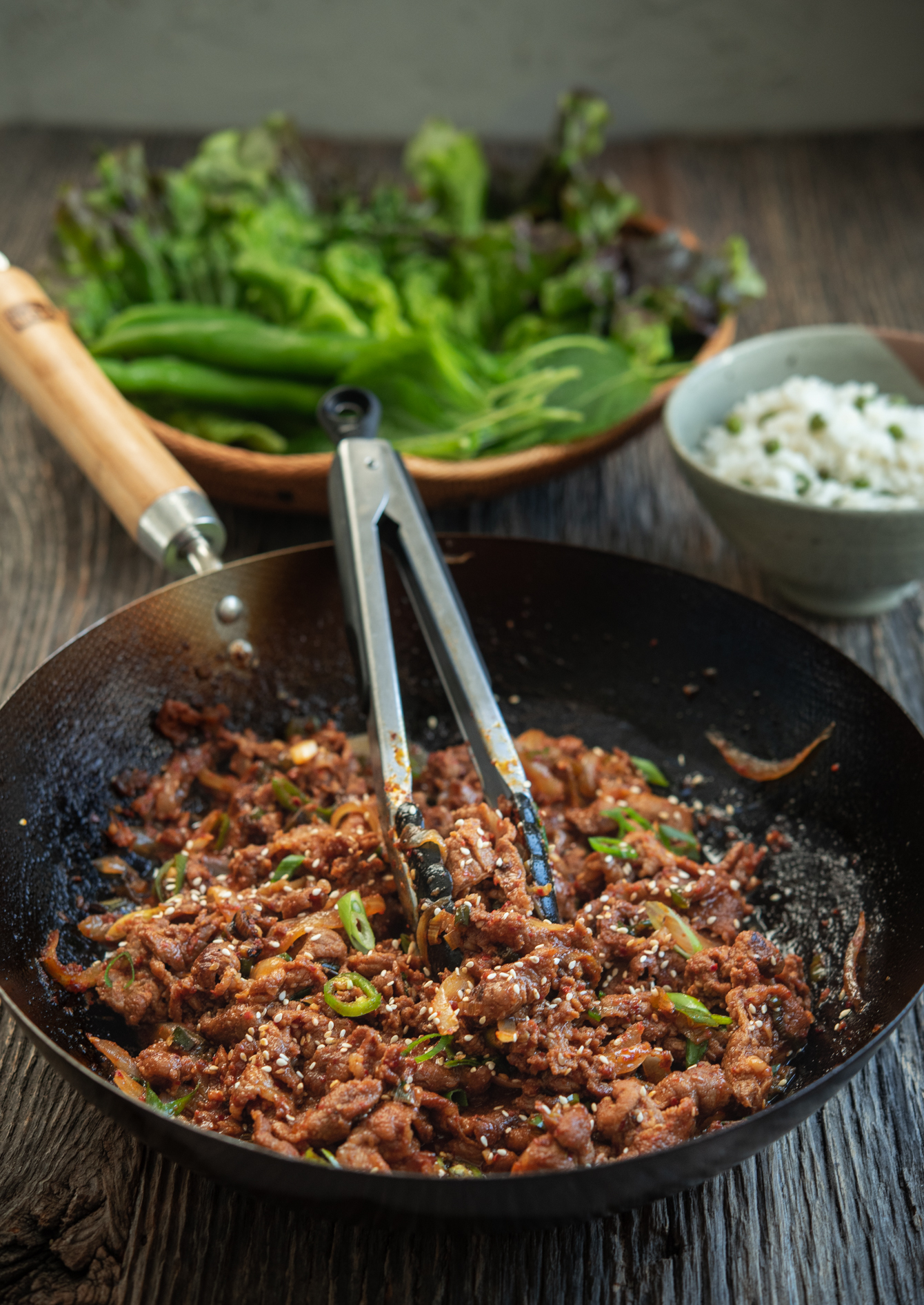

How to make Spicy Pork Bulgogi (Jeyuk Bokkeum)
The Pork
For this recipe, you need pork with some fat, or “marbling,” to keep the meat moist and tender. Pork shoulder (or pork butt) is ideal because it has the right amount of fat. Make sure the pork is thinly sliced. While some people use pork belly, I find it too fatty for stir-frying.
You can buy pre-sliced thin pork shoulder (moksal) at Korean stores, available both fresh and frozen. If you prefer to slice the meat yourself, freeze it for about an hour first to make cutting easier. To ensure the pork absorbs the sauce evenly, make sure to thinly slice it.
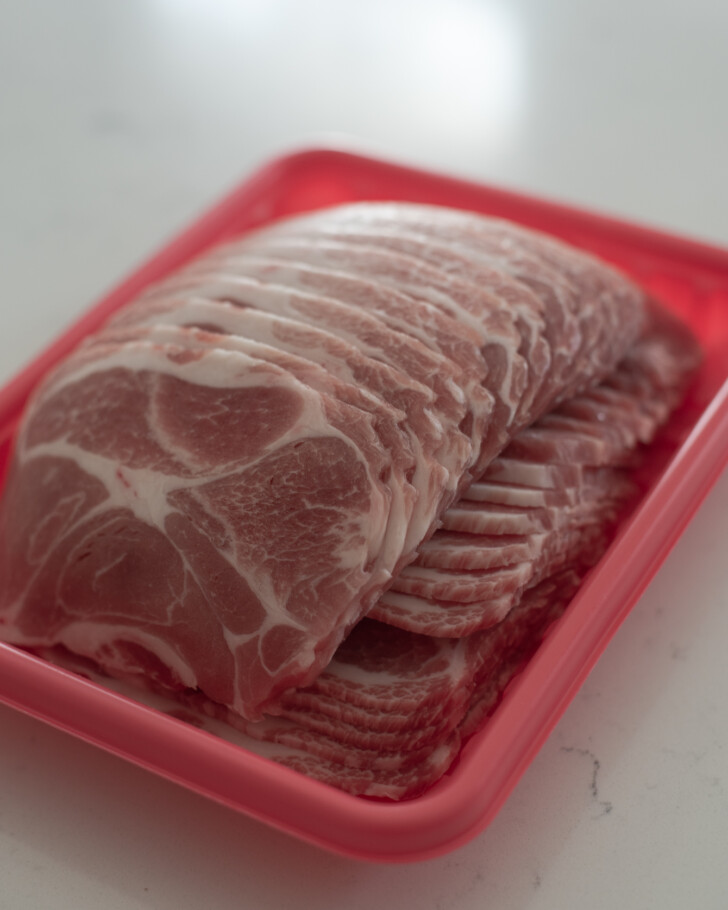

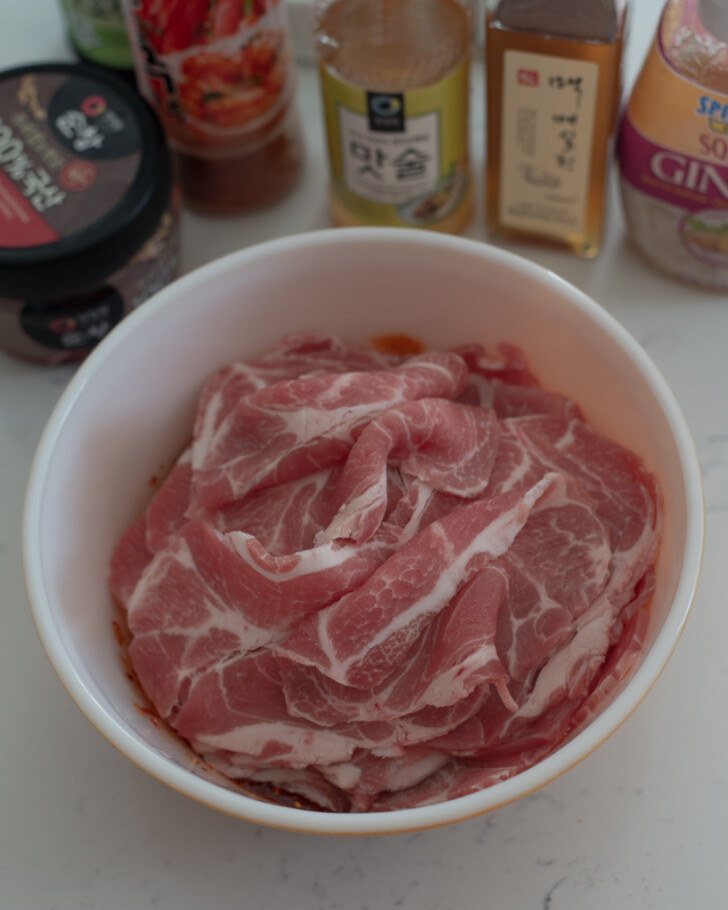

Mixing the Spicy Marinade
In this dish, unlike beef bulgogi which mainly uses soy sauce in its marinade, the key ingredient is gochujang. This spicy yet slightly sweet Korean chili paste pairs well with fatty pork, enhancing the flavor.
You can adjust the heat level by changing the amount of gochugaru (Korean chili flakes) you use. If you’re not a fan of spicy food, you can skip the chili flakes altogether.
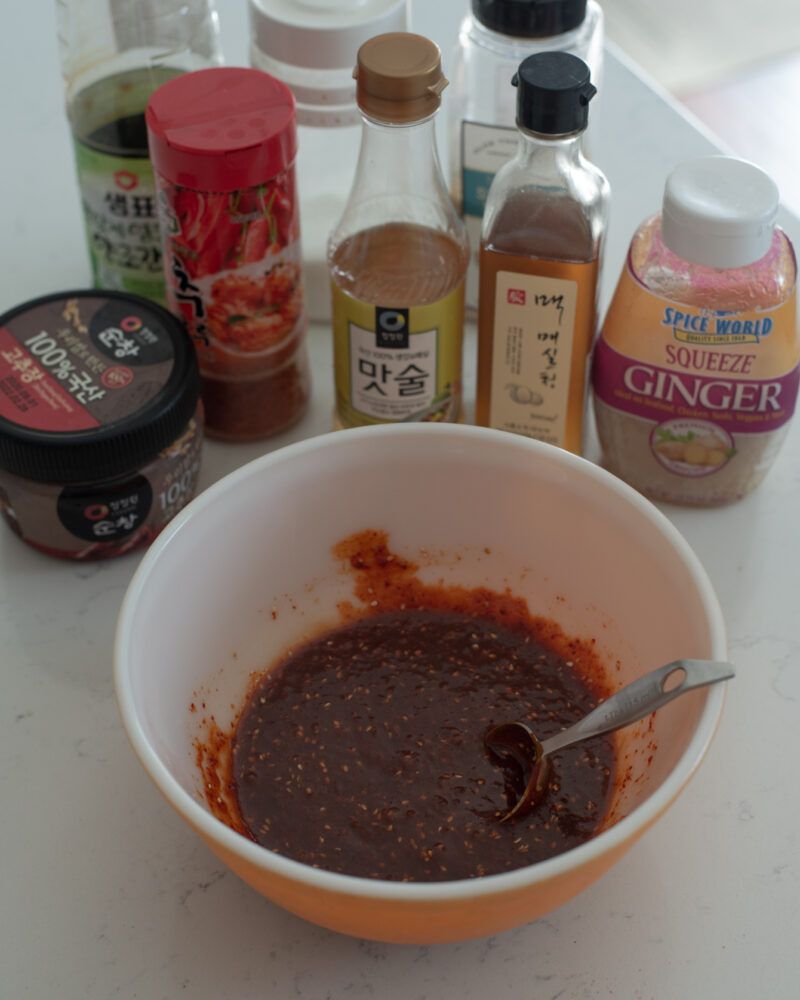

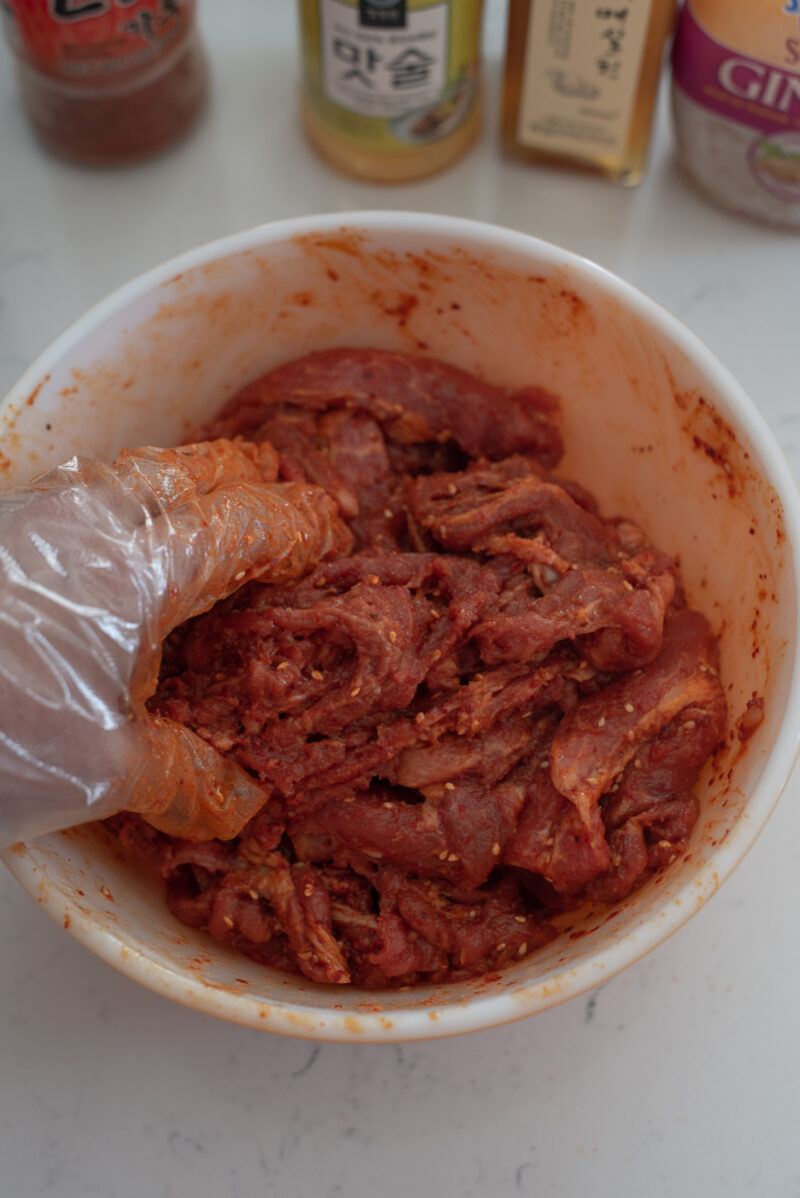

Fresh garlic and ginger are crucial to this recipe! They help reduce the porky smell and elevate the flavors of the dish. Combine all the sauce ingredients in a large bowl, add the meat, and mix everything together.
If you want to try this spicy pork bulgogi sauce with a slightly different version, try my chicken bulgogi recipe. It’s equally tasty and everyone who tried that recipe have raved about it.
The Stir-Frying Process
Marinated pork can be grilled over an open fire or pan-fried. In Korean homes, it’s typically pan-fried, which is why it’s called jeyuk bokkeum, meaning stir-fried pork.
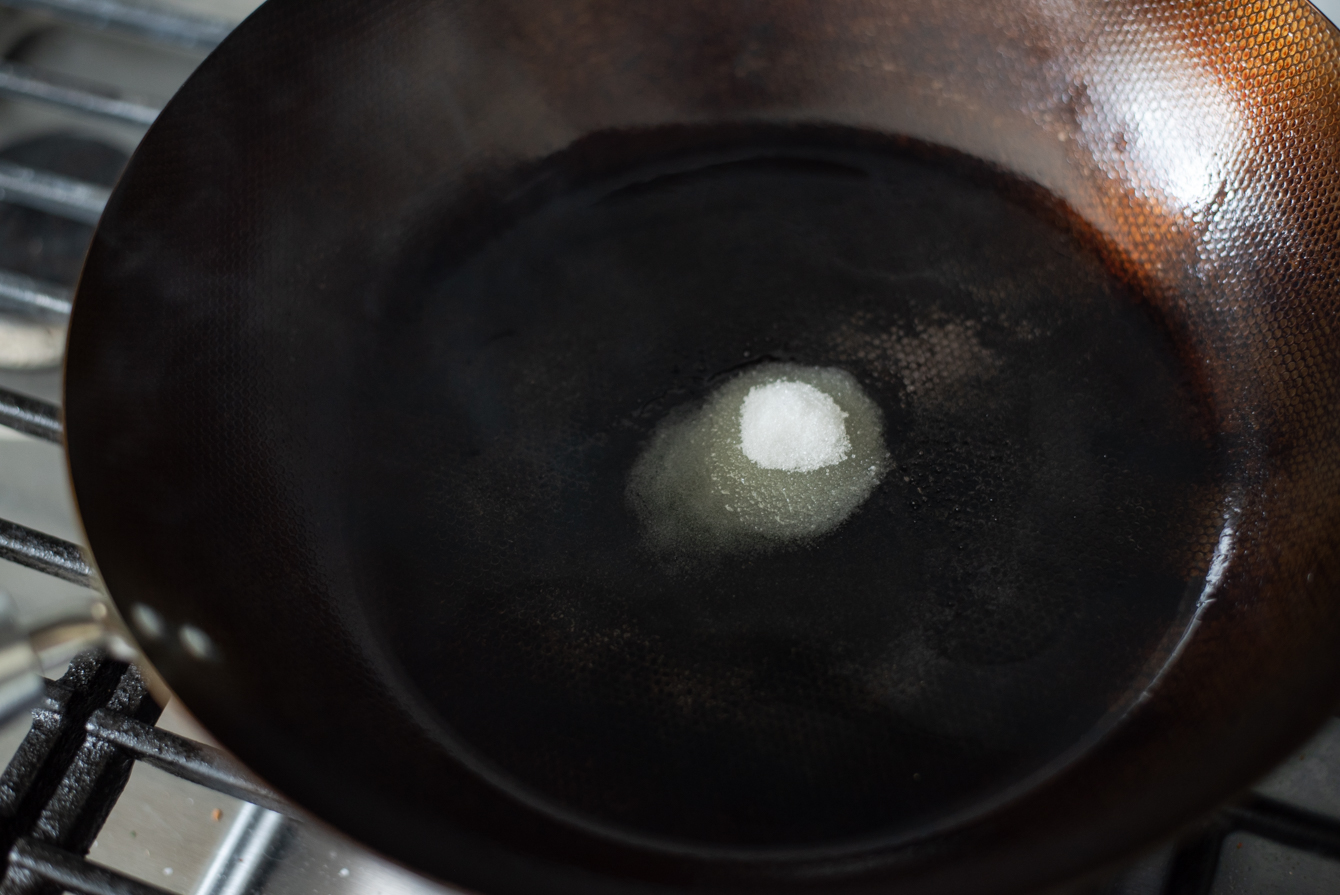

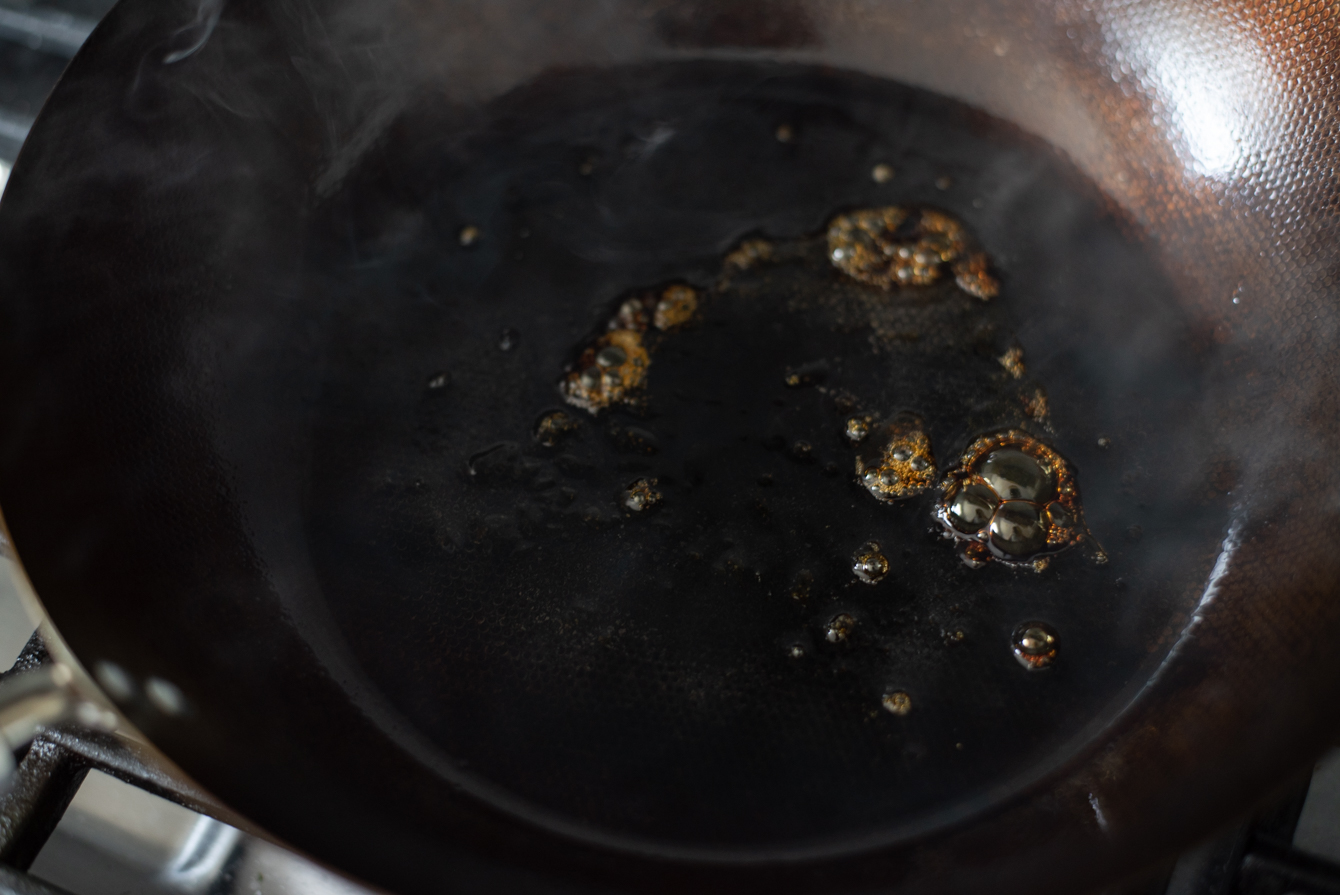

Caramelize the sugar. Heat 2 tablespoon of oil in a deep skillet or wok over high heat. Add 2 teaspoon of sugar and swirl the pan around. Let the sugar turn brown and caramelized.
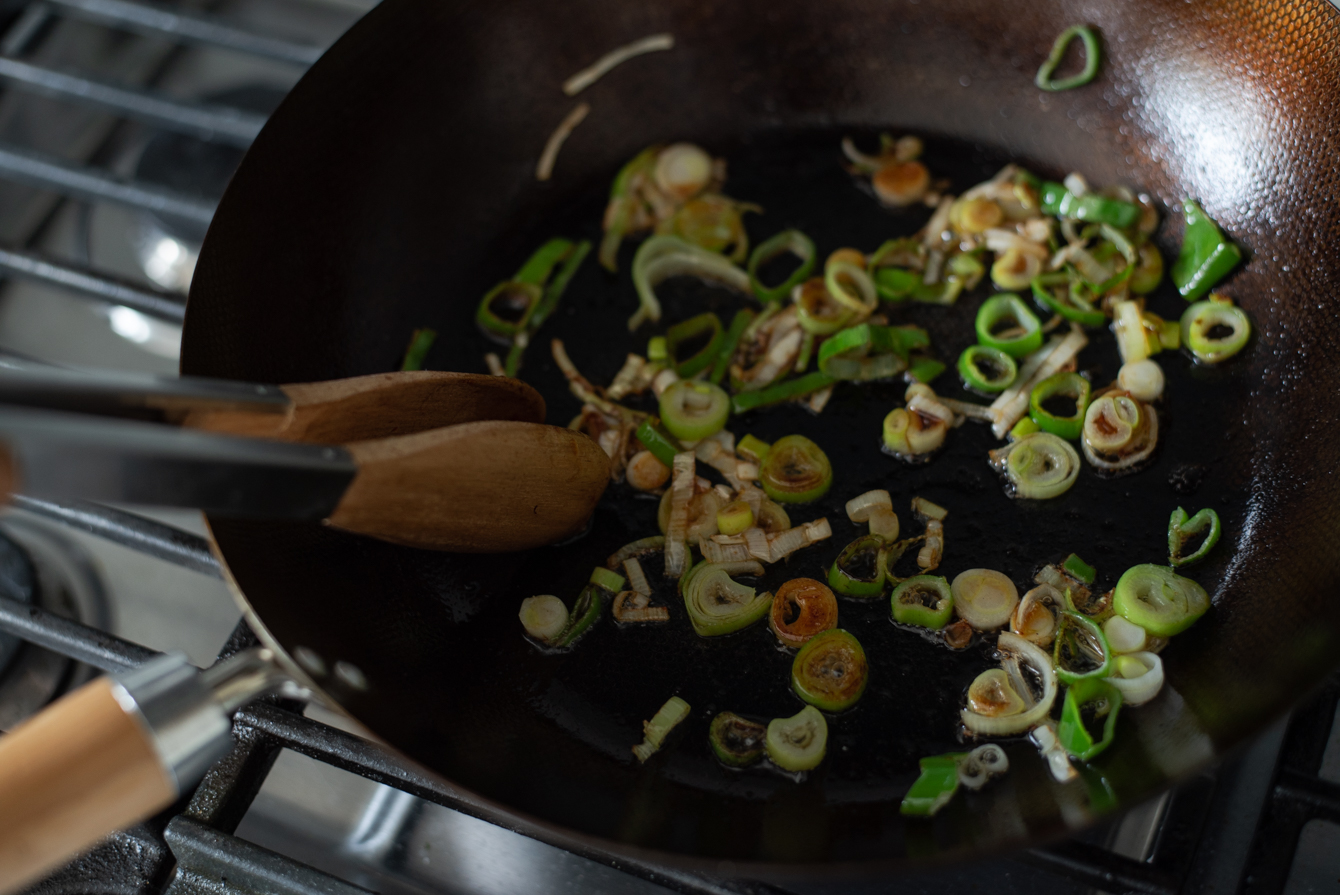

Infuse the leek (or green onion). Quickly add the chopped Asian leek (or green onion) and stir-fry for 30 seconds to infuse the oil.
Note: Infusing the leeks in caramelized sugar adds a smoky taste to the meat, which enhances the overall flavor of the dish.
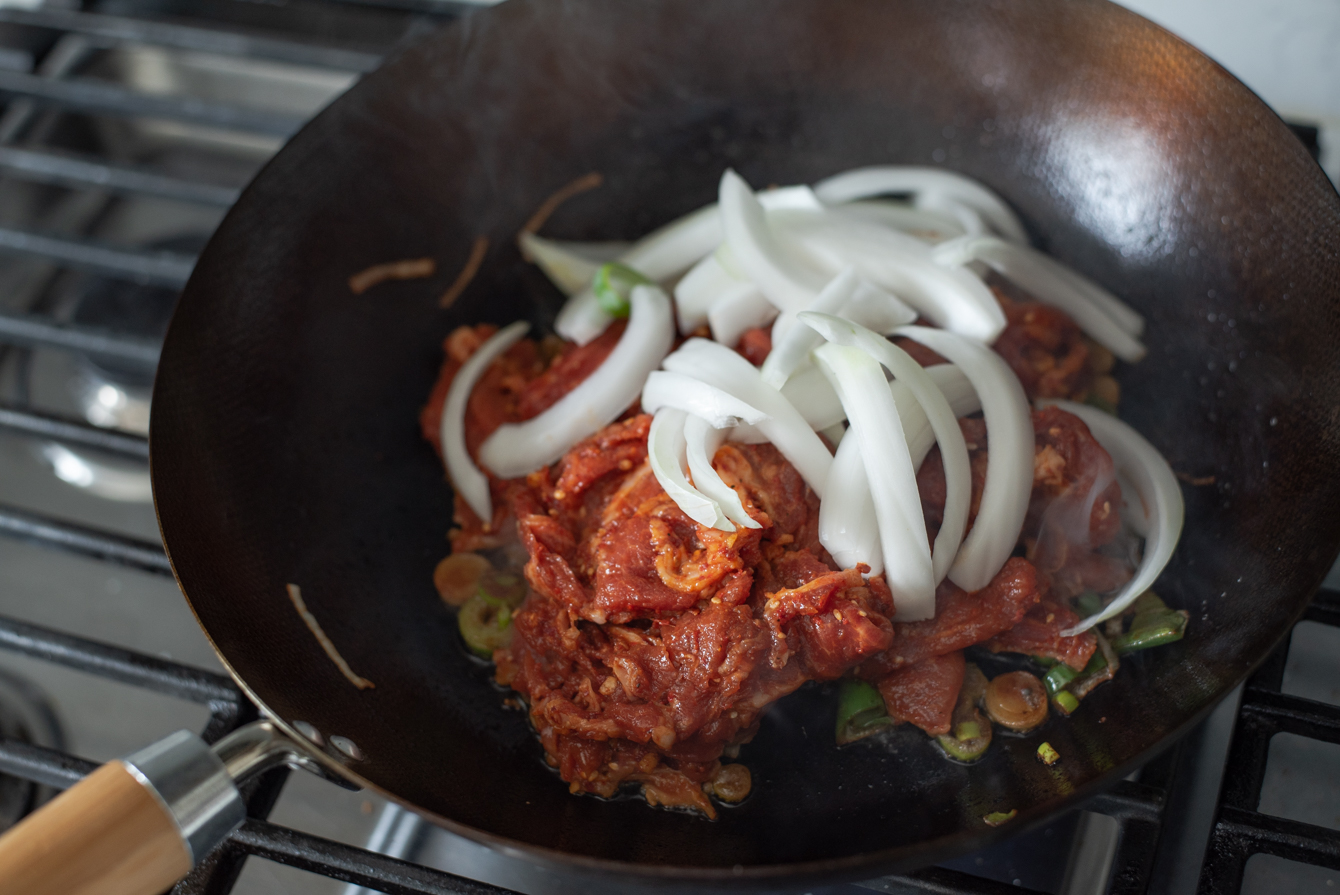

Add the marinated pork and onion. Add pork and onion while keeping the heat high. The meat should sizzle right away when you add it to the skillet.
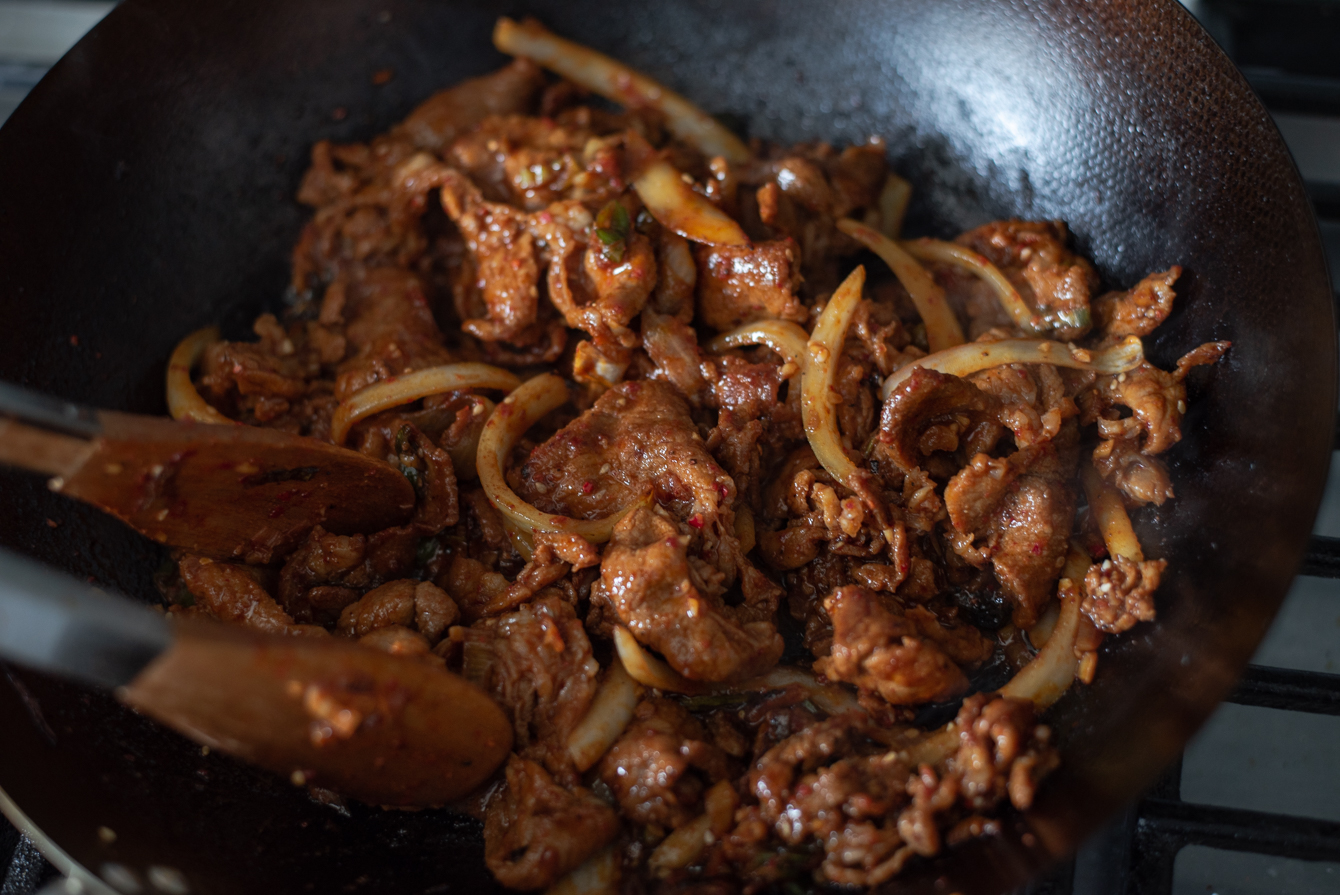

Stir-fry the pork. Stir-fry pork and onion until they are fully cooked and tender. Serve immediately with rice.
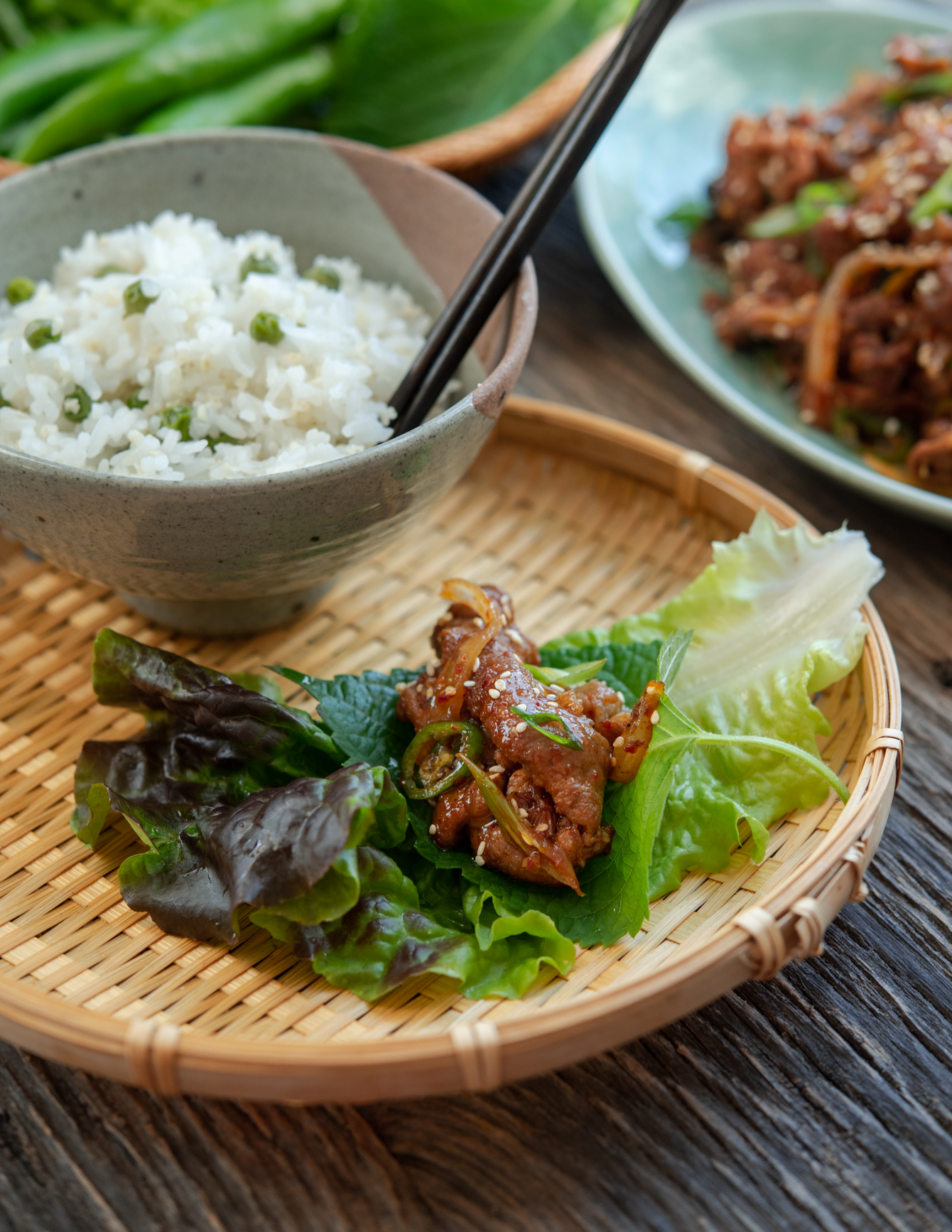

Serving Spicy Pork BBQ
You can enjoy this dish with just a bowl of rice and some Korean side dishes. However, it tastes even better wrapped in leafy greens like red or green leaf lettuce and perilla leaves (kkaennip), topped with ssamjangsimilar to how you would enjoy Korean BBQ.
While many Korean households pair jeyuk bokkeum with doenjnag jjigae (Korean soybean paste stew), it’s not mandatory. The choice is yours!
What Sets This Recipe Apart
This recipe stands out because of how it’s cooked. Quick stir-frying leeks with caramelized sugar before adding the pork infuses a smoky flavor that greatly enhances the taste of the dish. Give it a try, and you’ll find yourself making it over and over again.
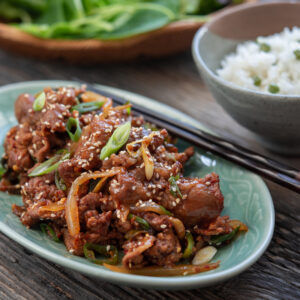

Spicy Pork Bulgogi (Jeyuk Bokkeum)
Make Korean spicy pork bulgogi at home with this easy recipe. Quickly stir-fry thin slices of pork shoulder in a spicy gochujang sauce for a home-cooked meal that rivals restaurant quality, if not better.
- 2 lb (900 g) pork shoulder , or pork butt, very thinly sliced
- 2 tbsp canola oil
- 2 tsp sugar
- 1 Asian leek , or 4 green onion, chopped
- 1/2 large onion, sliced
-
To make the seasoning paste for pork, combine chili paste, chili flakes, soy sauce, rice wine, sugar, garlic, ginger puree, sesame oil, sesame seeds, and black pepper in a small mixing bowl; mix well.
-
In a large mixing bowl, separate each slice of pork and put them in a bowl. Add the seasoning paste and mix well (Wearing a disposable food glove is helpful). You can make this step ahead of time and let it marinate in the refrigerator up to 24 hrs. Or you can go straight to stir-fry without marinating at all.
-
Heat 2 tablespoon of oil in a deep skillet or wok over high heat. Add 2 teaspoon of sugar and swirl the pan around. Let the sugar turn brown and caramelized.
-
Quickly add the chopped Asian leek (or green onion) and stir-fry for 30 seconds to infuse the oil. Add pork and onion. Stir-fry pork and onion until they are fully cooked and tender, about 3-4 minutes. Serve immediately with rice and lettuce (if desired).
-
Note: If your skillet is not big enough to stir-fry the entire batch of pork, divide the pork in half or in portion you desire. If so, you will need to reduce the amount of oil, sugar, and leek to caramelize per batch accordingly.
Calories: 202kcal, Carbohydrates: 12g, Protein: 15g, Fat: 11g, Saturated Fat: 2g, Polyunsaturated Fat: 3g, Monounsaturated Fat: 5g, Trans Fat: 1g, Cholesterol: 46mg, Sodium: 357mg, Potassium: 338mg, Fiber: 1g, Sugar: 7g, Vitamin A: 359IU, Vitamin C: 4mg, Calcium: 32mg, Iron: 1mg

